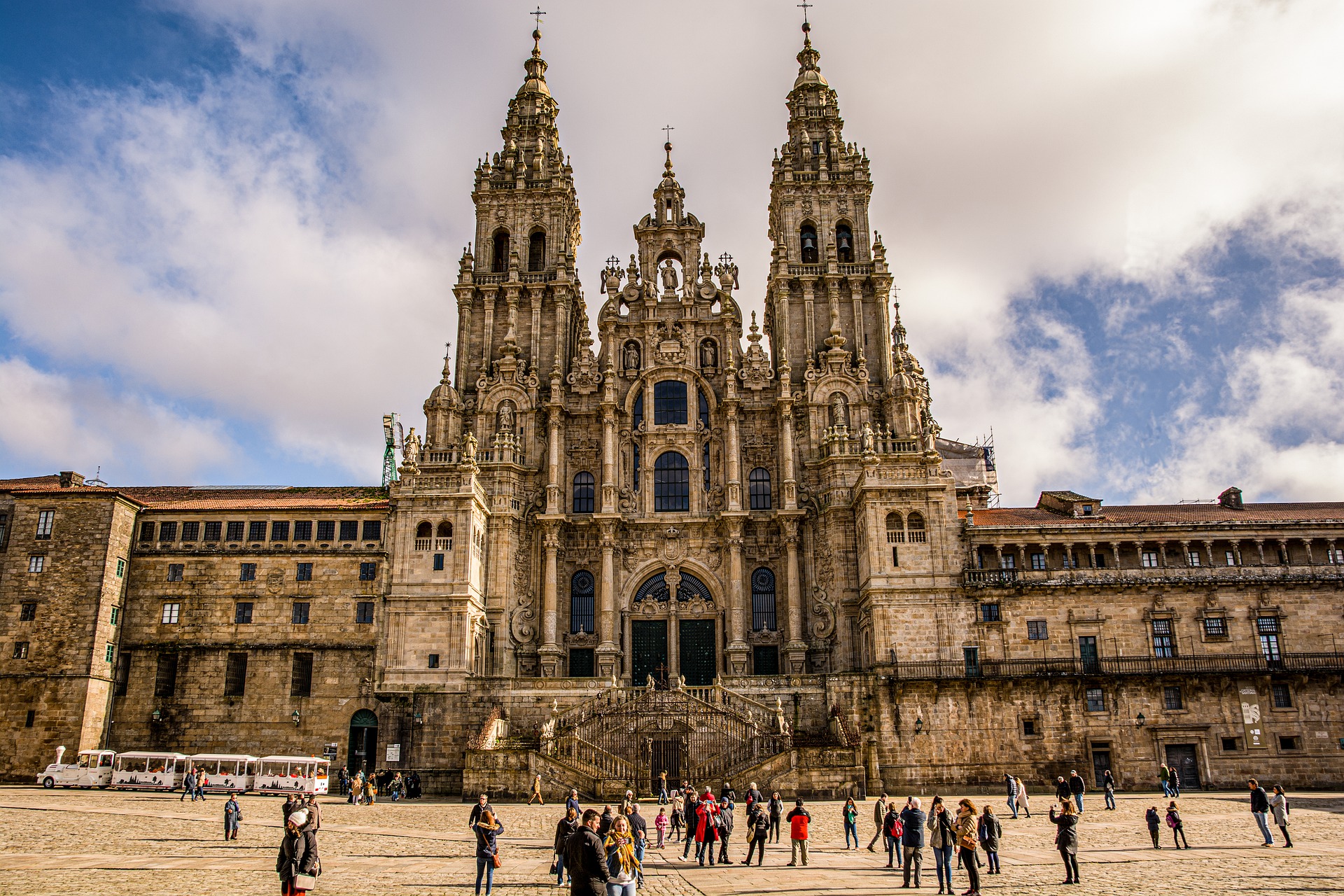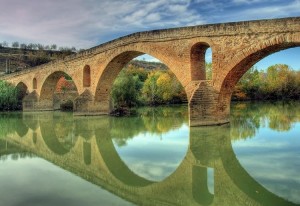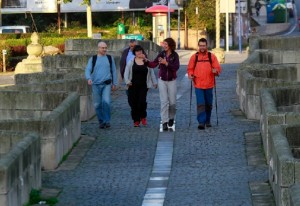The squares surrounding the Cathedral of Santiago de Compostela in Galicia, Spain, are much more than mere open spaces near a religious building. These squares – Plaza del Obradoiro, Plaza de la Quintana, Plaza de las Platerías, and Plaza de la Inmaculada – constitute the pulsating heart of Santiago, the endpoint of a thousand-year-old journey undertaken by pilgrims from all over the world: the Camino de Santiago.
Plaza del Obradoiro
Plaza del Obradoiro is undoubtedly the most famous of the squares surrounding the Cathedral. It is here where pilgrims have their first encounter with the majestic temple, marking the end of their long journey. The square is named after the workshops of ‘obradoiros’ (goldsmiths) that were located around it during the construction of the cathedral. Today, it serves as a meeting place for pilgrims and tourists and is the site of significant celebrations and demonstrations.
Plaza de la Quintana
Plaza de la Quintana is divided into two levels: Quintana de los Vivos and Quintana de los Muertos, historically separated by their use during burials. This square is the setting of the Holy Door, which is only opened during the Holy Jacobean Years, offering pilgrims a symbolic entrance to the Cathedral and forgiveness of their sins.
Plaza de las Platerías
Plaza de las Platerías gets its name from the silversmith workshops that were located in the area. It is the only square that offers a frontal view of one of the Cathedral’s facades, adorned with sculptures depicting biblical scenes. This square is a vibrant meeting point, full of the energy of visitors exploring its corners and the stories that the stones have witnessed.
Plaza de la Inmaculada
Facing the north facade of the Cathedral, Plaza de la Inmaculada extends to the Monastery of San Martiño Pinario. It is a space of relative serenity compared to the hustle and bustle of the other squares, offering a different perspective on the architectural complexity of the Cathedral and the urban environment surrounding it.
A Place of Stories and Encounters
The squares of the Cathedral of Santiago de Compostela are a living tapestry of human stories, spirituality, architecture, and culture. Each one, with its distinctive character, invites visitors to pause, reflect, and celebrate the journey, whether physical, spiritual, or both. They are spaces where the past meets the present, where every stone and every path tells a story, making Santiago de Compostela an eternal place in the memory of those who visit.












